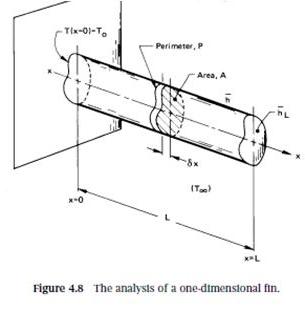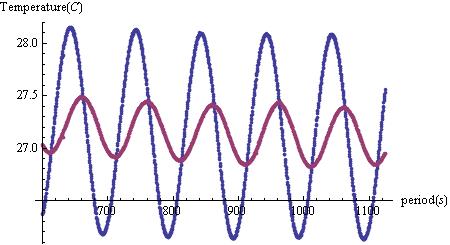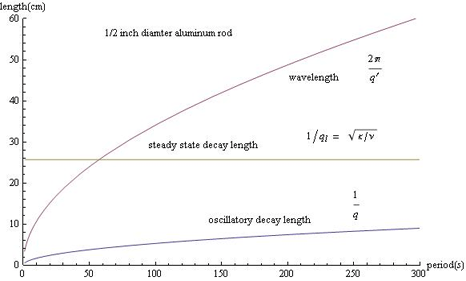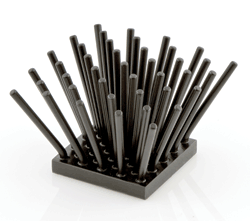



Consider a long, thin cylinder. We'll precisely define long and thin later. One end is plugged into your TEC. The rest of the cylinder is sticking straight up into the air. Set your TEC to a temperature different from the lab. Heat flows into the rod. The heat conducts along the rod's axis, but also flows out the sides of the cylinder into the lab. The heat flow along the rod is described by Fourier's law, while the conduction into the lab is described by Newton's law. Read about these in secs. 1.3 and 4.5 of Lienhard & Lienhard.Your job is to calculate and measure the temperature profile along the rod for both a stationary and a sinusoidal time varying temperature applied by the TEC. Detailed instructions are in this Matlab notebook.
Measure the temperature profile along the cylinder as described in the paper by Abu-Mulaweh. Next, repeat Angstrom's method (done in 1863), but don't use steam and ice water! Program your controller to produce a pure sinusoidal varying temperature at the base of the rod.
For the derivation of the Angstrom experiment with a periodically varying temperature, read Carslaw and Jaeger, sec. 4.4 pl. 136 -139. The semi-infinite rod.
First, use only proportional control and carefuly observe the temporally sinusoidal varying temperature. You will notice that the heating and cooling portions of the temperature are different. You observed that dT / dPWM was different for heating and cooling. Can you figure out how to modify the Arduino code to correct this and make the temperature profile closer to a sinusoid?
Next, use integral control on the sinusoidal varying temperature profile. Under what conditions will the measured temperature accurately track the set temperature? Does it matter that dT / dPWM is different for heating and cooling when using integral control?
Excellent example lab report from S2010.

This Matlab notebook tells you what to do and how to do it. Sample data set for analysis.
Integration of a fin experiment into the undergraduate heat transfer laboratory, Abu-Mulaweh, International Journal of Mechanical Engineering Education 33.
Angstrom's paper from 1863!
Description of a teaching lab of Angstrom's method in 1963.
A nice example of Angstrom's method similar to our implementation from 2019.
Undergrad write-up of Angstrom's method from the College of Wooster
Heat Transfer Theory Lienhard & Lienhard
read chapter 4. focus on secs 1.3 & 4.5.
Newton's law of cooling - A critical assessment, O'Sullivan, Am. J. Phys 58, 956 (1990).
If you run out of things to do, measure the thermoelectric coefficient of your Peltier device:
Computer based learning in an undergraduate physics laboratory: interfacing and instrument control using Matlab, Sharp, Glover, and Moseley, Eur. J. Phys. 28, S1-S12 (2007).
If you run out of things to do, measure the propagation of a pulse of heat:
An experiment on the dynamics of thermal diffusion, Sullivan, Thompson and Williamson, American Journal of Physics 76, 637 (2008.)

